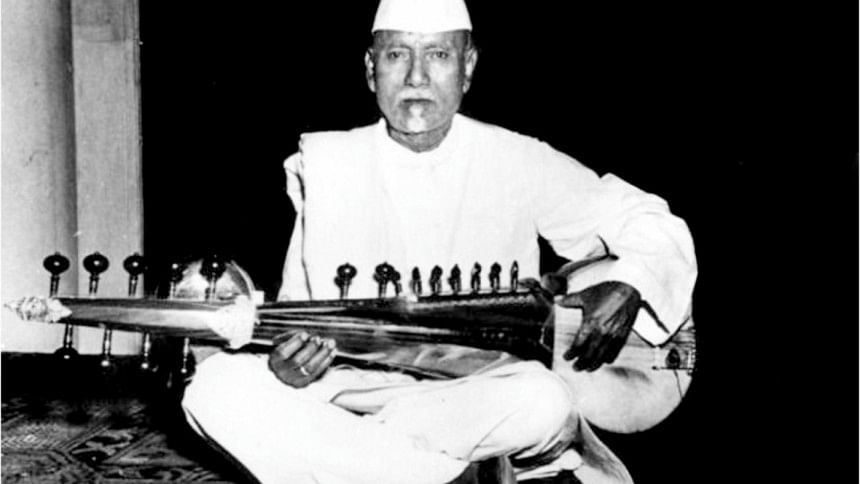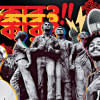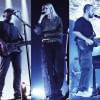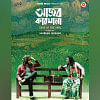To burn a mockingbird

It was a windy August day, 1877 C.E. A young, darkish and mostly unimpressive youth was at Nulo Gopal's door; he wanted to train with the maestro. His name was Tara Prasanna Sinha, he kept repeating. Gopal – then the most famous Bengali musician in Calcutta – was not fully convinced. He only took in serious students with a clean, orthodox Hindu background. And this one did not quite fit the bill.
Of course, this young man wasn't Tara Prasanna Sinha at all. He was young Allauddin Khan of Brahmanbaria, freshly off the boat in Kolkata, so to speak – and until recently, the musical mainstay of a jatra party (a wandering musical and theatre troupe). Travelling through the countryside up to the city of Dacca, he had become immersed in the rich folk traditions of Bengal. He had been, fortunately, old enough to know that pursuing a career in music was social and financial suicide, but young enough to let passion prevail.
A fugitive from home at the age of 10 – Allauddin was no stranger to obstacles. Years later, he would literally jump in front of a car in order to be accepted by a master. It was this doggedness of character that eventually got him in with Gopal for a rigorous 12-year programme. The programme gave young Allauddin a phenomenal foundation, to the point that he could easily notate in his mind or on paper just by listening to a piece of music. These years passed in hunger and destitution, leaving Allauddin to eat chickpeas and Ganges water, or seek out rations for the poor. He later started working as a session musician at the Star Theatre (of Girish Chandra and Binodini Dasi fame).
Of Allauddin Khan, his disciple Ravi Shankar wrote, "[he] imposed upon himself an even stricter code of conduct when he was a young man, often practicing sixteen to twenty hours a day, doing with very little sleep, and getting along with a minimum of material things. Sometimes, when he practiced, he tied up his long hair with heavy cord and attached an end of the cord to a ring in the ceiling. Then, if he happened to doze while he practiced, as soon as his head nodded, a jerk on the cord would pull his hair and awaken him."
Some years later in Muktagachha, Allauddin heard a sarod (type of lute) performance by Ustad Ali Ahmed and set his mind to the instrument. After Gopal died, Allauddin gave up vocal training out of grief and went to train with Ahmed. The teacher quickly realised that this student would surpass even him. So he referred the disciple to veena-maestro Ustad Wazir Khan. Wazir was descended from Miah Tansen himself and was convinced only after Allauddin dived in front of a running car to prove his dedication. It is said that he gave Allauddin access to the 'Senia Gharana' or the Tansen School of music.
The rest is history. Allauddin succeeded his guru and later became court musician for the Maharaja of Maihar. Here he fundamentally reshaped the Maihar Gharana, developing a number of ragas, combining the bass sitar and bass sarod with more traditional instruments and setting up an orchestra. In 1955, Allauddin Khan established a college of music in Maihar. Alongside numerous awards and titles, Khan was given both India's third and second highest civil decorations. Ustad Allauddin Khan established the most influential musical families in Indian classical music and died at the age of 110 years, just one year after his student Ravi Shankar performed in the Concert for Bangladesh.
Many of you have read about the Brahmanbaria clashes: about two weeks back, a fight started – allegedly over an overpriced mobile phone – and somehow spiralled out of control. What you may have missed is what happened later: madrasa students and law enforcers clashed and at one point, a member of the former died. This fuelled further violence, spreading to the station, monuments and offices. Later, about 300 students entered Ustad Allauddin Khan's residence 'Sangitangan' – now both a music academy and a museum – and destroyed all its invaluable historic and cultural artefacts.
According to the testimony of the principal, items destroyed included a sarangi, pakhwaz, flutes, tanpuras and sitars, alongside historic correspondence and royal tributes. These were reportedly heaped out in the courtyard before being torched and destroyed altogether. There have been national and international condemnations of the incident. Parallels have been drawn between these acts and the attacks on the Balmiyan Buddhas blown up by the Taliban.
The attack on Allauddin Khan's legacy is baffling. This is not a man one can easily hate. This is not a man who inspires murderous rage in one. His influence on Indian classical music and pedagogy is staggering; as is the number of his disciples, students and admirers. Like ripples he sent out vibrating notes into the ether that soothed, healed, stimulated and inspired generations. It is easily deduced that the attacks could not have been motivated by the person.
Practically speaking, destroying banjos and old letters is unlikely to help any cause or avenge any wrongs. Then why was it targeted? Contextualised aside the vandalising of the Balmiyan Buddhas and city of Palmyra, it all begins to make perverse sense. The only explanation that remains is that it was a symbolic act. And what symbol is being attacked? That of a struggling Muslim boy from Brahmanbaria, triumphing against odds in an India where access to art was limited to only one set of believers? That of seminal Islamic influence on Indian classical music? That of giving back to one's ancestral home? That of the very idea of Brahmanbaria or Chittagong (division)? All these contradictions suggest that the attack was symbolic, but not manifestly ideological. It was mob action, but not exactly spontaneous. Such uninformed, misdirected hate does not come automatically. It has to be taught. And that is the world we live in: some teach hate; others teach the sarod.
Allauddin Khan's soulful melodies probably make the most fitting accompaniment for the profound sadness that emanates from symbolic deaths and destruction. The ustad's sarod may have been charred and destroyed, but he is survived by his music; by his stories and legends; by students like Ravi Shankar; by Hari Prasad Chaurasia who trained with Allauddin's student and daughter, Annapurna. The only peril facing the ustad's legacy is oblivion. So, put on one of his records; check out Ritwik Ghatak's documentary on him. If we thus remember, his music can live on. And with every flicker of the flame, that music will rise.
The writer is a strategy and communications consultant.

 For all latest news, follow The Daily Star's Google News channel.
For all latest news, follow The Daily Star's Google News channel. 








Comments